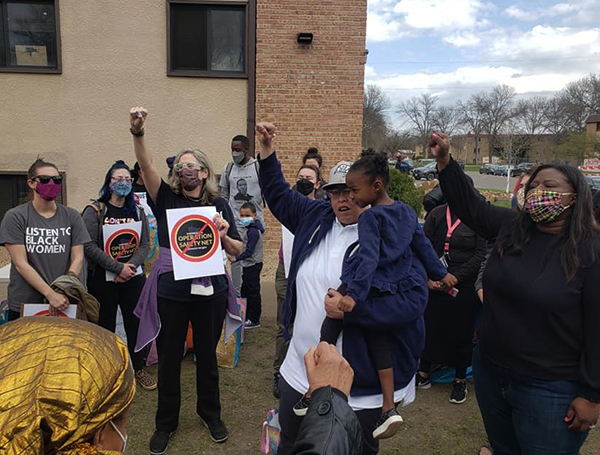By Ray Richardson
Guest Columnist
I lived in the Minneapolis-St. Paul area for 30 years before moving to Inglewood five months ago.
It has not been easy to see the images of barricades, barbed wire fences, boarded-up windows and National Guard troops on street corners displaying loaded guns in my former community.
Before Minnesota became the epicenter for police brutality and social justice in America, the usual talking points about this very diverse community started with the Minneapolis Sound, ignited by hometown sensation Prince.
If it’s not the music, it’s the numerous Fortune 500 corporations headquartered in the area, or the University of Minnesota, the scenic Mississippi River, or the urban lakes for boating, fishing and picnics.
The “quality of life” and career opportunities in the Minneapolis-St. Paul area draw people from around the country, myself included.
Although there is joy in the streets from Derek Chauvin’s conviction on all three counts for murdering George Floyd, the innocence of the Twin Cities, and the pride of “Minnesota Nice,” will never be the same.
Reality applied an everlasting grip on Minneapolis-St. Paul after the unjust police killings of Philando Castille in 2016, Floyd in 2020 and Daunte Wright two weeks ago.
The three high-profile killings of unarmed Black men in Minneapolis-St. Paul has raised alarms about “Minnesota Nice.” Life for African-Americans in the state has become such an issue that it prompted Minnesota Lt. Gov. Peggy Flanagan to announce the obvious.
“The stark reality,” Flanagan wrote on her Twitter page, “is that Minnesota is a place where it is not safe to be Black.”
After Chauvin’s conviction, the common theme expressed by many African Americans in Minnesota is that maybe the jury’s decision will be the catalyst for real change, particularly real change in how Minneapolis-St. Paul police officers interact with Black citizens.
There has always been Black awareness in the Twin Cities, and a strong Black culture in the area, but it’s never been on display with this much power and determination.
African Americans make up only 14% of the population in Hennepin County, which covers Minneapolis and Brooklyn Center, yet you would think that percentage has been tripled with the show of defiance in the aftermath of Castille, Floyd and Wright. A new generation of residents seeking change has been awakened.
This defiance will unlikely diminish after Chauvin’s conviction. The African-American community in Minneapolis-St. Paul wants serious police reform, and there are signs, finally, that change is coming.
There is strong confidence in Medaria Arradondo, Minneapolis’ first African-American police chief, to clean up the culture in his department and implement new policies. Arradondo, who grew up in Minneapolis, is in his third year as chief. He has full support of the Black community, something his predecessors struggled to earn.
Other police departments in Minnesota, and hopefully those around the country, have been given a wake-up call.
The actions of police regarding Castille, Floyd and Wright have done serious damage to Minnesota’s image and “quality of life” reputation. Violence and unrest last year after Floyd’s death put Minneapolis-St. Paul in the same turbulent category with other major metropolitan areas ravaged by police misconduct.
One thing about Minnesotans, they are uncomfortable with negative perceptions. After Castille, Floyd and Wright, there will be a relentless effort to restore that “quality of life” brand.
Ray Richardson is a contributing writer for The Wave after spending many years working for the Pioneer Press in St. Paul, Minnesota. He can be reached at rayrich55@gmail.com.













